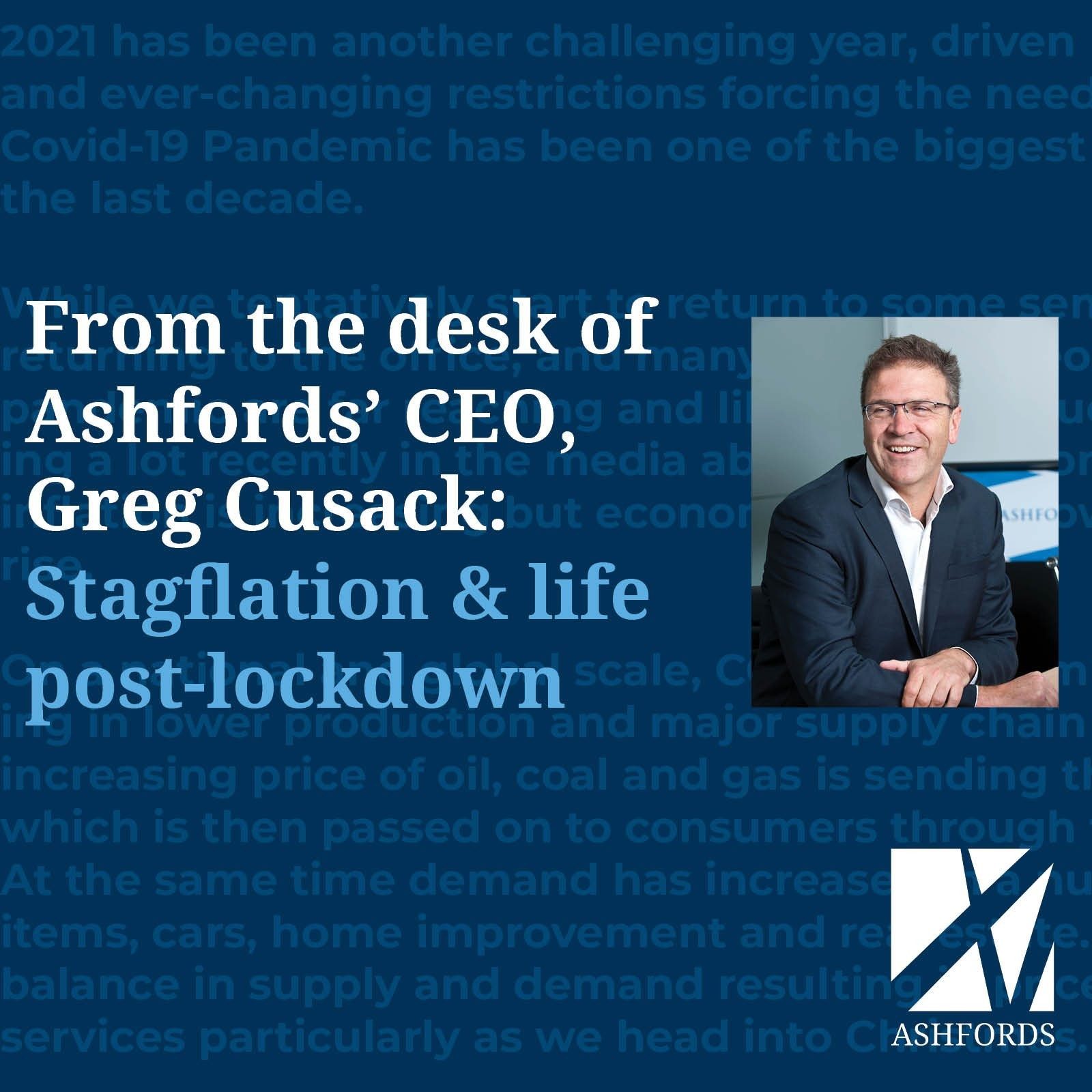Written by Ashfords' CEO, Greg Cusack 
2021 has been another challenging year, driven by unpredictable lockdowns and ever-changing restrictions forcing the need to adapt. It is
clear the Covid-19 Pandemic has been one of the biggest hurdles I have had to face in the last decade.
While we tentatively start to return to some semblance of normality, with staff returning to the office, and many industries reopening, the
impacts of the pandemic are far reaching and likely to continue for some time. We are hearing a lot recently in the media about
‘stagflation’, an economic position where inflation is increasing but economic growth slows and unemployment rates rise.
On a national and global scale, COVID-19 has impacted many industries resulting in lower production and major supply chain blockages.
Furthermore, the increasing price of oil, coal and gas is sending the cost of energy up, a cost which is then passed on to consumers through
the increased price of goods. At the same time demand has increased in a number of areas such as luxury items, cars, home improvement and
real estate. This has caused a further imbalance in supply and demand resulting in prices surging for many goods and services particularly
as we head into Christmas.
And yet alongside this inflation, we are not seeing wages increase and in fact unemployment is on the rise and economic growth has slowed.
While this position may seem alarming on the face of it, most economists believe that we will not return to the dire stagflation levels seen
in the 1970s global financial crisis. Policymakers learned from what we experienced, and industry, is different now in part due to
technology, plus our saving grace is our strong economy prior to COVID-19. We know this imbalance and stagflation has been caused by a
distinct trigger event in COVID-19. As the world slowly returns to normal, and the disruptions to supply chains ease, inflation is likely to
gradually return to pre-pandemic levels and the economy will begin to right itself.
The other interesting conversation we are having around the office, is the COVIDSafe practices being put in place and how best to protect
our community, staff and clients. Our COVIDSafe policy and procedure is outlined on our website for you to make a note of when visiting the
office or meeting with our staff onsite.
I, for one, am thrilled to now have Ashfords' team members return safely to our new Dandenong South office. We are back talking, laughing
and collaborating face-to-face, welcoming clients back and are all very much looking forward to getting together and celebrating our
achievements this year.
I hope you are all keeping safe and well through this transition.
All the best for the remainder of 2021.


